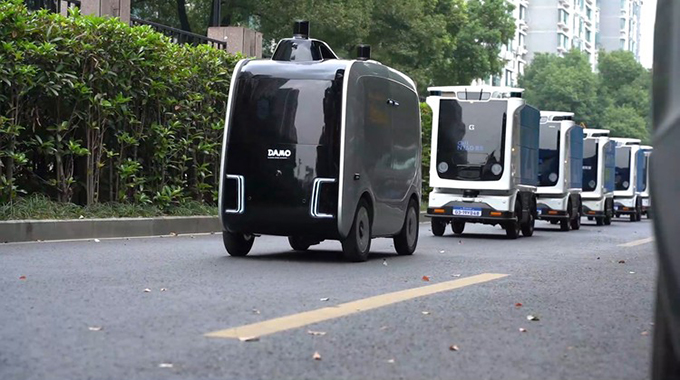The ICTs behind China’s annual shopping carnival

Ms G
With November 11, behind us, curtains have fallen on the annual shopping carnival in China.
The scoresheet is breathtaking. By 00:09 midnight on the 11th, China’s online retail giant JD.com had received 200 billion RMB of orders, roughly US$30,2 billion.
On the evening of the 10th, 82 million viewers logged into the online show rooms of Weiya, China’s most famous live-streaming influencer who promotes products in her sessions. Delivery companies handled 490 million parcels a day on average.
The biggest difference this year for me and my friends is that deliveries became much faster. In the previous editions of the carnival, online retailers and logistics companies were usually so overwhelmed by the sudden surge in orders that deliveries could be delayed by up to a month.
This year, all the things I ordered reached my family within three or four days, even those sent from as far as Taiwan, which is thousands of kilometres away from my town.
This dramatic improvement is brought about by new technologies. In recent years, China is increasingly embracing digitised supply chains. In a country vast in space, efficient distribution is critical to unlocking the potential of its huge consumer market. The new tools they are using include cloud-based systems, data analytics, and artificial intelligence.
A peek behind the scene
This year, ordinary customers can watch online how their parcels are being handled behind the scene. At 00:00 sharp on November 1, the “Double 11” logistics live streaming went online. Logistics service providers show their viewers how the entire supply chain works, from the far-flung destinations where products are being packaged to warehouses where robots are busing sorting boxes.
China-Europe railway can also be seen transporting goods out of China. By November 11, over 100 million viewers had watched the big show. Thanks to cloud-computing technology, customers are able to visually track their product of choice.
Robot at your door
On a university campus in eastern China’s Zhejiang province, students this year found some unfamiliar faces among their delivery men. Twenty-two robots moved in and out of the 27 dormitory buildings on the expansive campus, bringing parcels to their buyers within 10 minutes after an order is placed. In a distribution centre near the university, students also got to enjoy services like automated pick-up of parcels, QR code-enabled staggering of collection time, and sending parcels by scanning the face.
Land-air joint action
In a distribution centre in Belgium which services the nearby 17 countries, a Chinese automated sorting system makes it much faster for European buyers to receive what they ordered from China, supported by a fleet of hundreds of trucks. In the sky, 270 cargo flights are also making a difference. Unmanned aerial vehicles are used for same-day deliveries and deliveries to remote areas of the country.
These technological innovations are thrilling and truly transforming the way commerce is organised in China and impacting the life of almost every Chinese.
With their help, my parents, in the cold weather of minus thirty degrees Celsius of their town, can click a button and have fruits brought from the tropical areas of the country to their table within three days.
A decade ago, this was still considered a wild dream. But, as China’s logistics digitisation shows, human ingenuity knows no limits.










Comments